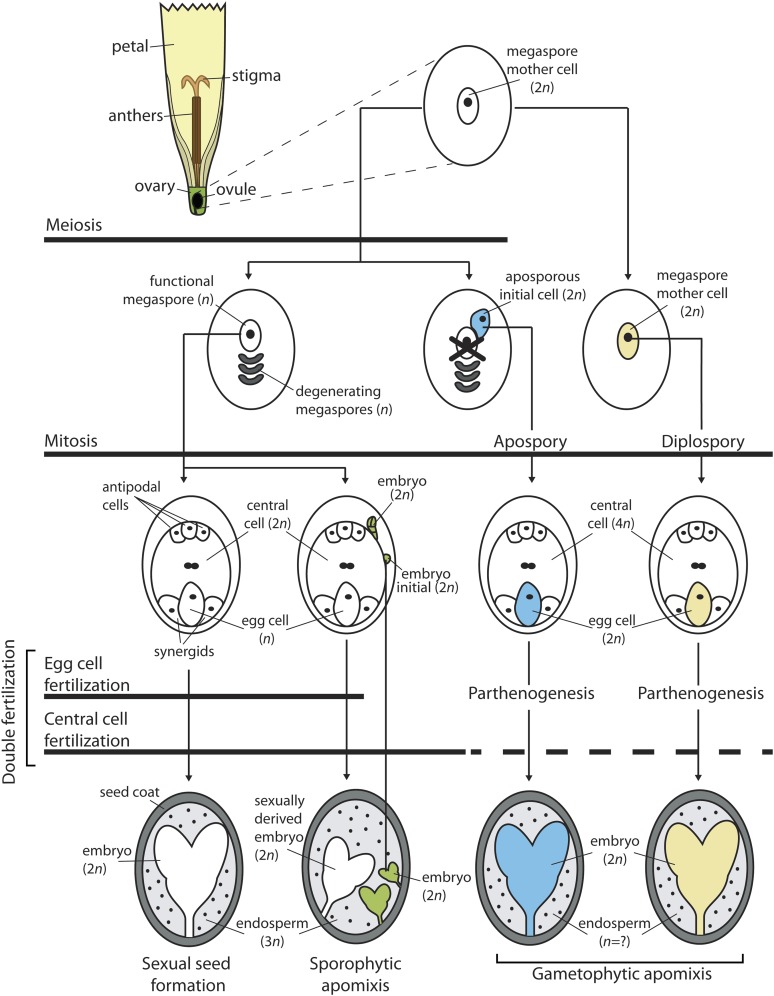Figure 1.
Mechanisms of sexual and apomictic seed development. Seed developmental processes occur within the ovule of the flower, which is depicted as a single floret typical of Hieracium species in this figure. This diagram compares the major differences in the seed development pathway for sexual seed formation and the apomictic mechanisms of sporophytic and gametophytic apomixis. Meiosis, mitosis, and double fertilization constitute the major components of the seed formation pathway. Arrows passing through each of these components represents the involvement of a given component within a particular pathway. In the process of gametophytic apomixis, embryo sac formation can occur via either apospory or diplospory, which are distinguished by different embyro sac precursor cells. In gametophytic apomixis, embryo formation is initiated in the absence of fertilization (parthenogenesis); however, endosperm formation can occur either with or without fertilization, which is represented by a dashed line. The relative ploidy level of cells (n) is tracked for various components throughout each pathway. The ploidy level of endosperm formed through gametophytic apomixis is variable, depends on a number of factors, and is therefore represented by a question mark (?). In the depicted apospory pathway, the sexual pathway is shown to terminate once the aposporous initial cell undergoes mitosis. Different colors track the precursor cells that form the embryo for each pathway: sexual (white), sporophytic apomixis (green), diplospory (yellow), and apospory (blue).

